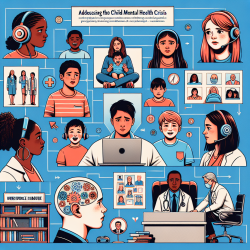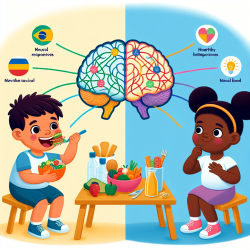Understanding the National Emergency in Child Mental Health
The mental health crisis among children and adolescents has reached alarming levels, as highlighted in the research article "Making More Child and Adolescent Psychiatrists: Responding to the National Emergency in Mental Health in Children and Adolescents." The article underscores the urgent need for more child and adolescent psychiatrists (CAP) to address the growing mental health challenges faced by young people.
The Current Landscape
Statistics reveal a steady increase in mental health concerns and suicide rates among youth aged 10-24. The COVID-19 pandemic has exacerbated these issues, with significant rises in emergency department visits for mental health emergencies. The shortage of CAP professionals is a critical barrier to addressing this crisis effectively. According to the Substance Abuse and Mental Health Services Administration (SAMHSA), the U.S. needed an additional 48,000–49,000 CAP physicians in 2018, a figure that has likely increased.
Strategies to Enhance CAP Training and Recruitment
To combat the shortage, the article suggests several strategies to enhance CAP training and recruitment:
- Increase CAP Training Slots: Although the number of training slots has increased, the number of applicants has not kept pace. More efforts are needed to attract candidates to these programs.
- Shorten Training Duration: A proposed 4-year training track could attract more medical students by reducing the time required to become board-certified in both adult and child psychiatry.
- Mentorship and Exposure Programs: Initiatives like mentorship programs and summer immersion experiences can increase interest in CAP during medical school.
- Diverse Training Pathways: Offering various training pathways, including fast-track and triple board programs, can cater to different interests and career goals.
Role of General Psychiatrists and Primary Care Physicians
In addition to increasing the number of CAP professionals, the article highlights the importance of equipping general psychiatrists and primary care physicians with the skills to manage common mental health issues in children. This approach can significantly expand the available workforce to meet the needs of young patients.
Conclusion: A Call to Action for Practitioners
As practitioners, it is crucial to stay informed about these developments and consider how you can contribute to alleviating the child mental health crisis. Whether through advocacy, mentorship, or adopting new training models, every effort counts in ensuring that children and adolescents receive the quality psychiatric care they need.
To read the original research paper, please follow this link: Making More Child and Adolescent Psychiatrists: Responding to the National Emergency in Mental Health in Children and Adolescents.










